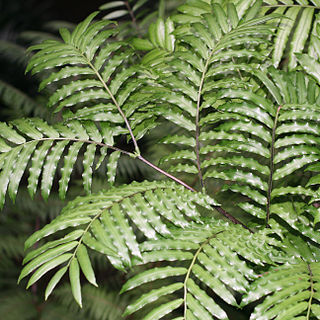A large fern. The fronds are large and arch over. Plants can be 4 m high and 2 m wide. The leaf divisions are long and 2.5 cm wide. There are a double row of spore bodies on each side of the veins underneath. There are horse hoof shaped bodies near where the frond breaks off from the thick starchy roots. These are edible.

